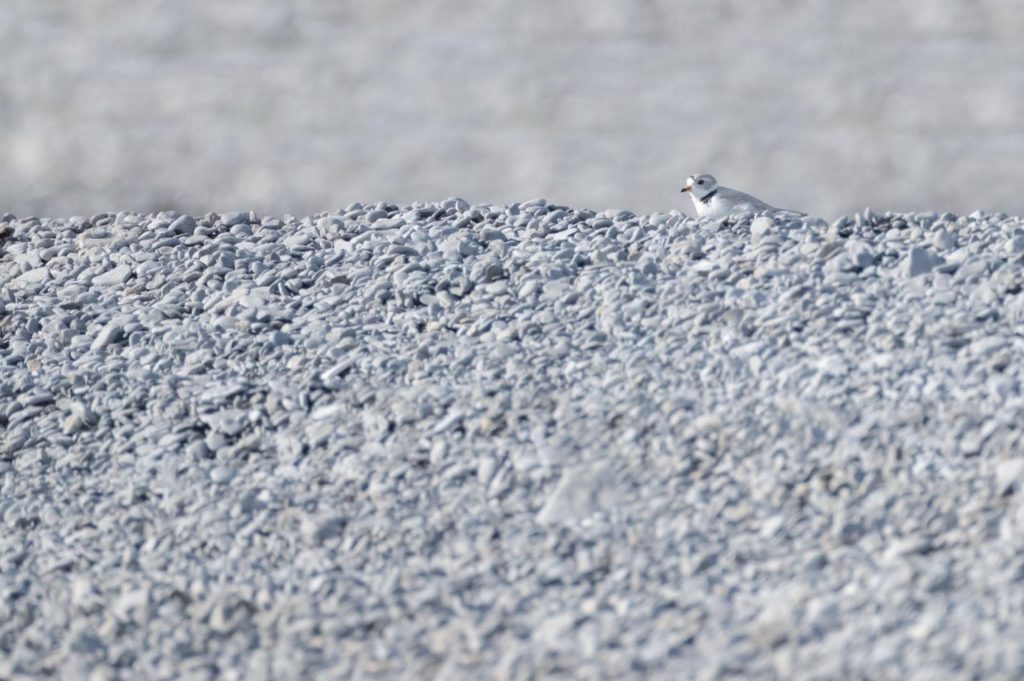Dunlin on the move
It is late May on the shores of eastern Lake Ontario and with a synchronized flash of wings, a flock of Dunlin alight at Charwell Point in picturesque Prince Edward County. Long distance migrants, these sandpipers are heading from their wintering grounds in the southern U.S. and Mexico to nest on Canada’s Arctic coast. Charwell Point’s uniquely remote and undeveloped beaches provide a perfect place for these birds to peacefully rest and feed before continuing north.
Many Shorebirds
Dunlin are not the only shorebirds to stop at Charwell Point. Visitors range from tiny Least Sandpipers to the charismatic and crow-sized Whimbrel.
As the most prominent feature on the otherwise gently curving southern shore of Prince Edward County, the point is a magnet for migrants crossing Lake Ontario. Songbirds such as sparrows and warblers find shelter in the windblown maple and cedars at the tip. For shorebirds, it is the remote and undisturbed beaches, habitat rare elsewhere in the County, that are the attraction. In fact, after recent survey work, twenty-six species of shorebirds have now been documented at this location. Among this number is a Ruddy Turnstone named 1332-27918 FELG8UN RUTU, or “RUTU” for short. Captured in New Jersey in 2012 and marked with a field readable tag, the bird has been regularly resighted along the eastern US coast – always in the last few days of May. Then, on June 4, 2020, RUTU was photographed at Charwell Point. This special record provides insight into the timing and trajectory of the Turnstone’s travels and underlines the point’s importance as a migration stopover site.
Wintering Waterfowl
While Charwell Point’s lonely beaches are essential spring and fall shorebird habitat, its offshore waters are equally important to wintering waterfowl. Greater Scaup arrive from the north and west in October and form huge, densely packed rafts of resting, preening and feeding birds. A significant portion of the world’s Long-tailed Ducks also winter here, down for the season from the Arctic. On cold January days, the air rings with their distinct and beautiful calls; put to flight by the resident Bald Eagles, their vast swirling flocks resemble clouds of smoke on the horizon. For these hardy northern waterfowl, the windswept and remote waters of eastern Lake Ontario provide a cold but hospitable home for almost six months of the year.
Looking to the future
Charwell Point sustains a remarkable diversity of life, illustrating the wonders of nature, and also its fragility. The shorebirds that are such an important aspect of the place are an extraordinary family of birds, but their future is not secure. With habitat destruction reducing their populations, safeguarding locations such as Charwell Point is a top priority. Fortunately, initiatives are underway to protect the lands and waters of eastern Lake Ontario, and there is a strong chance that future generations of birds – and humans – will continue to enjoy this special location.
Creating a National Marine Conservation Area (NMCA) in Lake Ontario’s eastern basin will safeguard bird populations, protect 243 species at risk, and contribute towards the government’s goal of protecting 30 percent of land and waters by 2030.
If you can, pay a visit to this biogem and discover all it has to offer.
